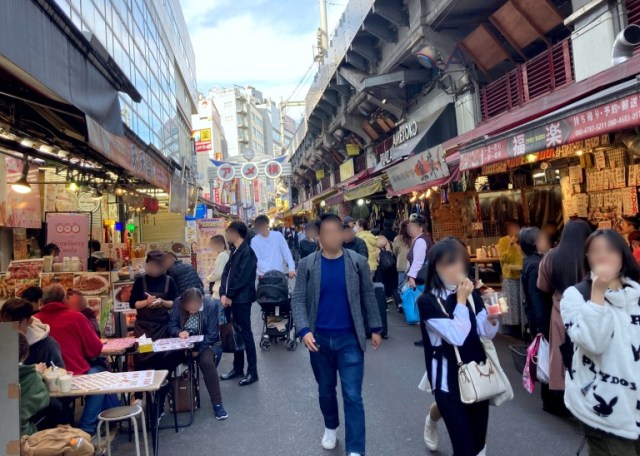
Miyako manju blend into the background in Ueno, but stand out from the crowd in flavor.
It’s not unusual to feel a bit of sensory overload walking around Tokyo’s Ameya Yokocho neighborhood. Pictured above, the network of shopping streets that stretches west of Ueno Station has been the city’s liveliest street market for generations, with boisterously friendly vendors and restaurateurs setting up shop on both sides of the alleyways and calling out to passersby as they hawk all manner of souvenirs, fashions, and food items.
So it can be easy for Ameya Yokocho’s few low-key establishments to get lost in the figurative and literal din of the place, which brings us to Karutaya.
Even Karutaya’s name (かるた家) doesn’t really stand out very much, with the shop instead using most of its sign’s space for its marque product, miyako manju (都まんじゅう), traditional sweet bean-filled cakes.
But Karutaya doesn’t have anyone standing out front, clapping their hands and shouting “Irasshai irasshai!” to beckon people into the store to try their manju. As a matter of fact, it wasn’t until recently that our ace reporter Mr. Sato did the math and realized he’s been walking past Karutaya’s storefront for more than a decade when visiting Ameya Yokocho, but he’s never tried their sweets.
▼ Karutaya’s sign is visible in this photo Mr. Sato took in 2015 while he was in Ameya Yokocho for an unrelated story.
Doing some checking, Mr. Sato found that Karutaya used to be located closer to Ueno Park, and moved to its current location in 2008. With Ameya Yokocho having a high rate of tenant turnover for its shops and restaurants, 15 years is a long time, so he figured that even if he’s never eaten their manju, pretty much everyone else who’s been to the neighborhood more than a few times has tried them, right? So he asked around the office, and was startled to learn that not only had none of his coworkers ever tried Karutaya, only one person, fellow reporter P.K. Sanjun, even knew what he was talking about when he mentioned the shop.
Now more intrigued than ever, Mr. Sato hopped on the train and headed to Ameya Yokocho to pick up a box of Karutaya’s miyako manju for taste-testing.
Though some sweets shops in Japan sell their wares as individual servings, Karutaya’s smallest size is a box of 10 manju. At just 600 yen (US$4), though, or 60 yen each, that’s not a bad deal at all. Since it’s a bit of a ways from SoraNews24 headquarters to Ueno, though, Mr. Sato decided to gamble on Karutaya’s manju being of above-average quality and got a box of 20 for 1,200 yen.
So what exactly is a miyako manju? The outside is similar to castella, the sweet spongy cake that’s a mainstay in the Japanese dessert scene. Seared into each is the kanji character miyako, 都, which means “capital” (the first miyako manju were made by a bakery founded in Kyushu that opened a branch in Tokyo and wanted to commemorate the occasion of expanding to the nation’s capital, hence the name).
Inside is a core of shiro an, or white sweet bean paste. Compared to the more common red sweet bean paste, shiro an has a richer flavor with a more delicate sweetness.
Like Karutaya’s storefront, there’s a simple, almost rustic quality to their miyako manju. That simplicity, though, means there’s nothing to get in the way of their outstanding taste. Sweet but not too sweet, they’re an immensely satisfying snack, and being bite-sized, they’re a great fit either for someone who wants a little treat but not a full, heavy dessert and for people who enjoy Japanese sweets enough they want to have two manju in one snack session.
After finally trying them for himself, it’s easy for Mr. Sato to see how Karutaya has lasted so long, and the fact that so many people walk by without noticing it suggests that many of those who have tried their miyako manju have probably become loyal repeat customers. So in the end, Mr. Sato has no regrets about buying the 20-manju box. He might be kicking himself for not having started getting snacks at Karutaya years ago, but he’s happy he can from now on, and also happy for the reminder, like with the roasted chestnut stand in Shibuya, that some of the best spots in Tokyo are the ones that are hiding in plain sight.
Shop information/strong>
Karutaya / かるた家
Address: Tokyo-to, Taito-ku, Ueno 4-9-13
東京都台東区上野4-9-13
Open 10 a.m.-8 p.m.
Closed Tuesdays
Photos ©SoraNews24
● Want to hear about SoraNews24’s latest articles as soon as they’re published? Follow us on Facebook and Twitter!
[ Read in Japanese ]
Follow Casey on Twitter for more reasons manju are awesome.
[ Read in Japanese ]

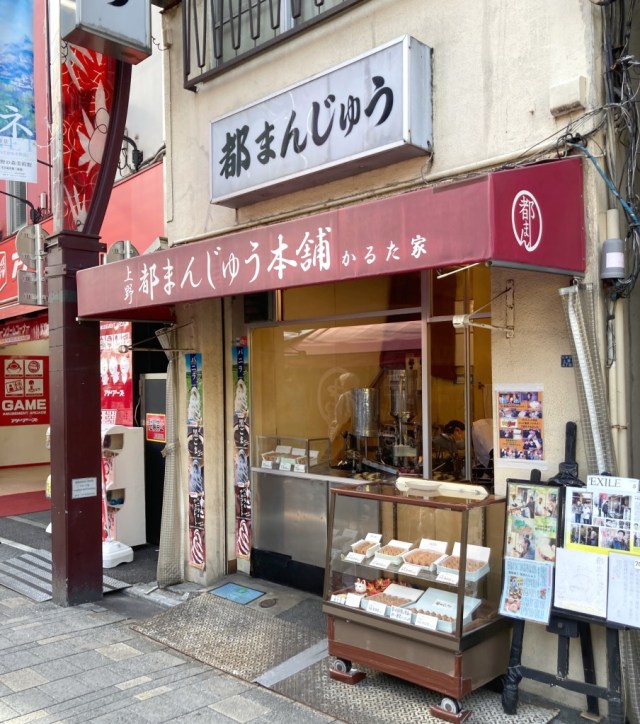
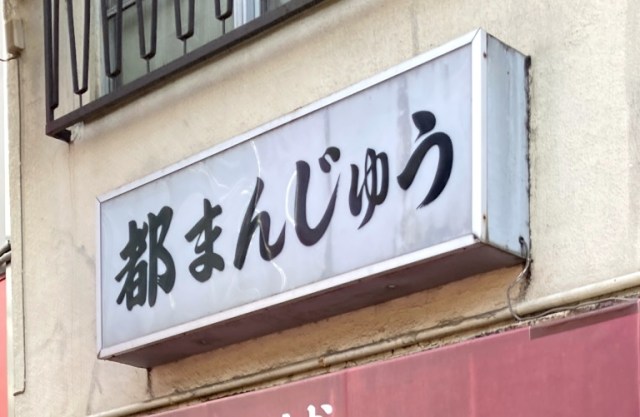
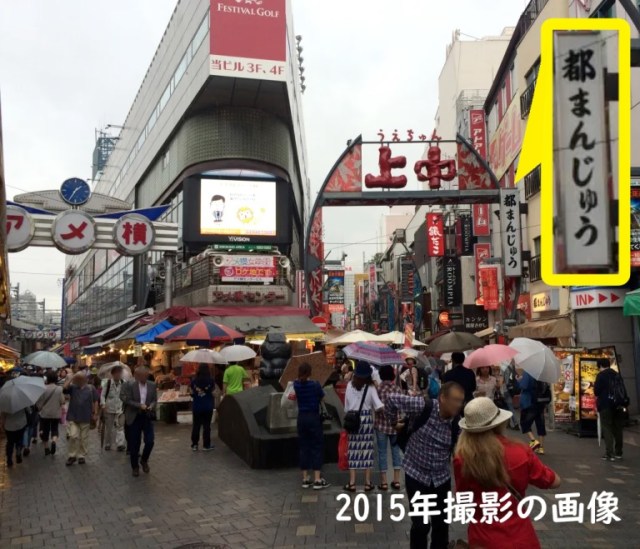
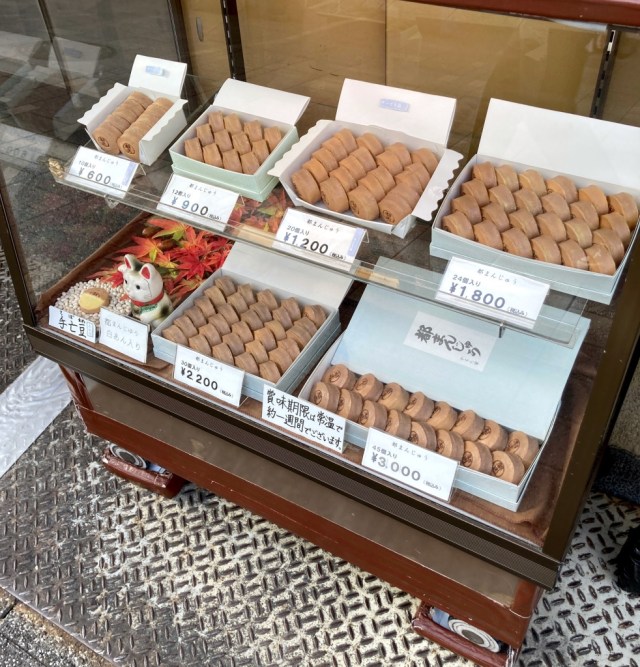
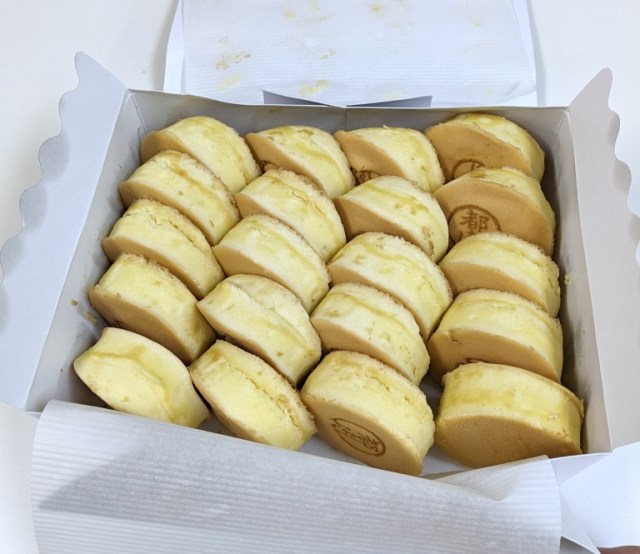
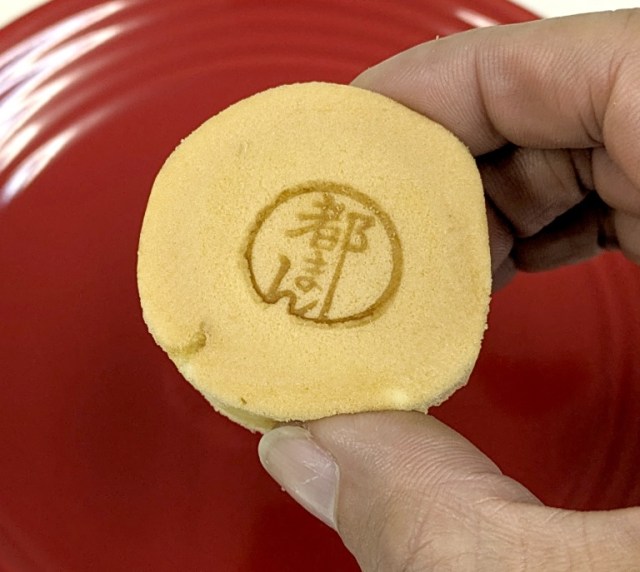
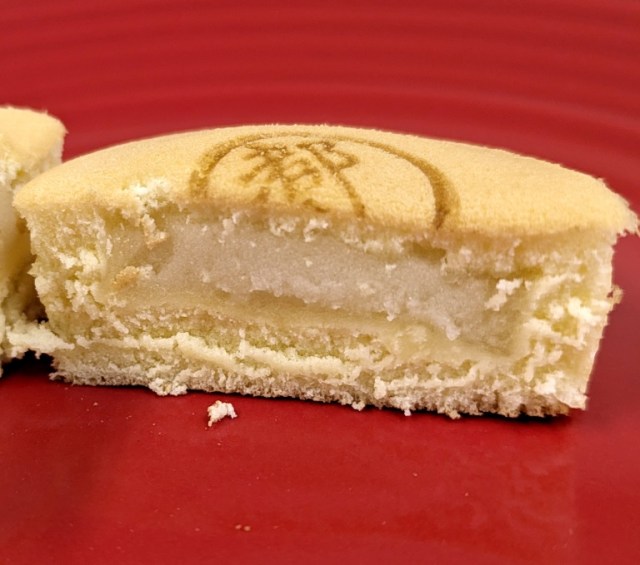
 Gunma’s yaki manju, unknown to most Japanese people, are the best manju we’ve ever had
Gunma’s yaki manju, unknown to most Japanese people, are the best manju we’ve ever had Puyo Puyo Manju return after 21 years…and our Puyo Puyo fan reporter achieves a childhood dream
Puyo Puyo Manju return after 21 years…and our Puyo Puyo fan reporter achieves a childhood dream Make your own Japanese manju snacks with hotcake mix【SoraKitchen】
Make your own Japanese manju snacks with hotcake mix【SoraKitchen】 Towering piles of sushi are waiting for you at this awesome Tokyo restaurant 【Photos】
Towering piles of sushi are waiting for you at this awesome Tokyo restaurant 【Photos】 Hungry in Tokyo’s Ueno? This restaurant’s all-you-can-eat sushi bowl deal is all you need
Hungry in Tokyo’s Ueno? This restaurant’s all-you-can-eat sushi bowl deal is all you need Japan’s new difficult-to-drink-from beer glass protects your liver, but it’s a brutal experience
Japan’s new difficult-to-drink-from beer glass protects your liver, but it’s a brutal experience New samurai glasses are Japan’s latest weird must-have souvenir
New samurai glasses are Japan’s latest weird must-have souvenir How to order snacks on a Shinkansen bullet train in Japan
How to order snacks on a Shinkansen bullet train in Japan Infographic shows how working culture differs across the globe
Infographic shows how working culture differs across the globe New Pokémon ice cream, dessert drinks, and cool merch coming to Baskin-Robbins Japan【Pics】
New Pokémon ice cream, dessert drinks, and cool merch coming to Baskin-Robbins Japan【Pics】 Caffeinated ramen for gamers that you can eat with one hand going on sale in Japan
Caffeinated ramen for gamers that you can eat with one hand going on sale in Japan New Nintendo Lego kit is a beautiful piece of moving pixel art of Mario and Yoshi【Photos】
New Nintendo Lego kit is a beautiful piece of moving pixel art of Mario and Yoshi【Photos】 To combat declining birth rate, Japan to begin offering “Breeding Visas” to foreigners
To combat declining birth rate, Japan to begin offering “Breeding Visas” to foreigners Demon Slayer: Kimetsu no Yaiba gets new roller coaster attractions and food at Universal Studios Japan
Demon Slayer: Kimetsu no Yaiba gets new roller coaster attractions and food at Universal Studios Japan High-fashion Totoro cuddle purse is like an elegant stroll in the forest【Photos】
High-fashion Totoro cuddle purse is like an elegant stroll in the forest【Photos】 Nintendo history you can feel – Super NES, N64, and GameCube controllers become capsule toys
Nintendo history you can feel – Super NES, N64, and GameCube controllers become capsule toys Hello, cosmetics! Clinique teams up with Hello Kitty this summer for first-time collaboration
Hello, cosmetics! Clinique teams up with Hello Kitty this summer for first-time collaboration “The most Delicious Cup Noodle in history” – Japan’s French Cup Noodle wins our heart【Taste test】
“The most Delicious Cup Noodle in history” – Japan’s French Cup Noodle wins our heart【Taste test】 Starbucks releases a cute Frappuccino and Unicorn Cake…but not in Japan
Starbucks releases a cute Frappuccino and Unicorn Cake…but not in Japan Kyoto Tower mascot termination reveals dark side behind cute Japanese characters
Kyoto Tower mascot termination reveals dark side behind cute Japanese characters McDonald’s Japan’s Soft Twist Tower: A phantom ice cream only sold at select branches
McDonald’s Japan’s Soft Twist Tower: A phantom ice cream only sold at select branches Yabai Ramen: What makes this Japanese ramen so dangerous?
Yabai Ramen: What makes this Japanese ramen so dangerous? Finally! Nintendo Japan expands Switch 8-bit controller sales to everybody, Online member or not
Finally! Nintendo Japan expands Switch 8-bit controller sales to everybody, Online member or not Japanese government wants to build luxury resorts in all national parks for foreign tourists
Japanese government wants to build luxury resorts in all national parks for foreign tourists 10 things you should buy at 7-Eleven in Japan
10 things you should buy at 7-Eleven in Japan Studio Ghibli releases anime heroine cosplay dresses that are super comfy to wear
Studio Ghibli releases anime heroine cosplay dresses that are super comfy to wear Woman charged for driving suitcase without a license in Osaka
Woman charged for driving suitcase without a license in Osaka Studio Ghibli unveils My Neighbour Totoro miniature house model
Studio Ghibli unveils My Neighbour Totoro miniature house model Kyoto experiencing problems with foreign tourists not paying for bus fares, but not on purpose
Kyoto experiencing problems with foreign tourists not paying for bus fares, but not on purpose Fighting mild hunger with a Japanese soda that turns into jelly in the stomach【Taste test】
Fighting mild hunger with a Japanese soda that turns into jelly in the stomach【Taste test】 Studio Ghibli’s Howl’s Moving Castle tapestry unveiled in Japan for first time
Studio Ghibli’s Howl’s Moving Castle tapestry unveiled in Japan for first time McDonald’s new Happy Meals offer up cute and practical Sanrio lifestyle goods
McDonald’s new Happy Meals offer up cute and practical Sanrio lifestyle goods Sales of Japan’s most convenient train ticket/shopping payment cards suspended indefinitely
Sales of Japan’s most convenient train ticket/shopping payment cards suspended indefinitely Sold-out Studio Ghibli desktop humidifiers are back so Totoro can help you through the dry season
Sold-out Studio Ghibli desktop humidifiers are back so Totoro can help you through the dry season Japanese government to make first change to romanization spelling rules since the 1950s
Japanese government to make first change to romanization spelling rules since the 1950s Foreigner’s request for help in Tokyo makes us sad for the state of society
Foreigner’s request for help in Tokyo makes us sad for the state of society Ghibli founders Toshio Suzuki and Hayao Miyazaki contribute to Japanese whisky Totoro label design
Ghibli founders Toshio Suzuki and Hayao Miyazaki contribute to Japanese whisky Totoro label design Doraemon found buried at sea as scene from 1993 anime becomes real life【Photos】
Doraemon found buried at sea as scene from 1993 anime becomes real life【Photos】 Tokyo’s most famous Starbucks is closed
Tokyo’s most famous Starbucks is closed Princesses, fruits, and blacksmiths: Study reveals the 30 most unusual family names in Japan
Princesses, fruits, and blacksmiths: Study reveals the 30 most unusual family names in Japan Tokyo’s new Dragon Capital restaurant complex looks like fairy tale, sounds like dream come true
Tokyo’s new Dragon Capital restaurant complex looks like fairy tale, sounds like dream come true New Japanese vending machines to love: The ones that sell Hiroshima’s best dessert!
New Japanese vending machines to love: The ones that sell Hiroshima’s best dessert! We try Starbucks Taiwan’s scrumptious mizu manju buns for the Dragon Boat Festival【Taste test】
We try Starbucks Taiwan’s scrumptious mizu manju buns for the Dragon Boat Festival【Taste test】 We munch on some real-life Slime dumplings from the Dragon Quest Walk collaboration
We munch on some real-life Slime dumplings from the Dragon Quest Walk collaboration Genital manju sweets, with a dash of “pubic hair”, raise eyebrows in Japan
Genital manju sweets, with a dash of “pubic hair”, raise eyebrows in Japan The top 10 shotengai shopping streets in Tokyo【Survey】
The top 10 shotengai shopping streets in Tokyo【Survey】 Power up with this positively scrumptious kakuni braised pork Pac-Man manju from Nagasaki
Power up with this positively scrumptious kakuni braised pork Pac-Man manju from Nagasaki Moving to Tokyo? Here are the three best, most reasonable neighborhoods to live in
Moving to Tokyo? Here are the three best, most reasonable neighborhoods to live in Scottish Fold Manju is the definition of too cute to eat!
Scottish Fold Manju is the definition of too cute to eat! 3 convenience store ice creams you should buy at 7-Eleven in Kyushu
3 convenience store ice creams you should buy at 7-Eleven in Kyushu Giant bacon cookies appear at Japan’s Guilty bakery, but do they fill us with remorse?【Taste test】
Giant bacon cookies appear at Japan’s Guilty bakery, but do they fill us with remorse?【Taste test】 Box of sweet steamed sushi cakes disappoints Japanese customer with false packaging
Box of sweet steamed sushi cakes disappoints Japanese customer with false packaging Japanese elves bring us a new snack cake with the great taste of old meat!
Japanese elves bring us a new snack cake with the great taste of old meat! How you can help victims of Japan’s massive flood and earthquake by enjoying delicious Kit Kats
How you can help victims of Japan’s massive flood and earthquake by enjoying delicious Kit Kats Working class Mr. Sato braves visiting a fancy hotel to buy a highly rated strawberry cream bread
Working class Mr. Sato braves visiting a fancy hotel to buy a highly rated strawberry cream bread
Leave a Reply